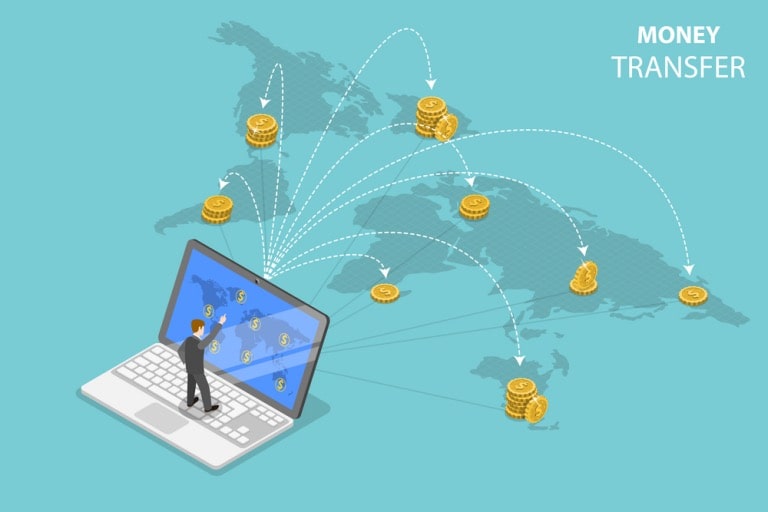The Ultimate Guide to Sending Money Abroad

Efficiently sending money abroad has become a critical part of modern life, whether it’s for family support, business transactions, or personal needs. Yet, with so many options and potential pitfalls, navigating the process can feel overwhelming. From selecting the right service to understanding fees and exchange rates, this guide will break it all down to make your international transfers seamless and stress-free.
Understanding Exchange Rates and Their Impact
One of the first things to consider when sending money abroad is the exchange rate. Exchange rates determine how much of your money will convert into the recipient’s local currency. Even a small fluctuation can make a significant difference, especially for larger transfers.
Financial institutions, such as banks and money transfer services, often add a markup to the mid-market exchange rate. This means that the rate you see on currency converters may differ from the rate you’re offered.
To ensure you’re getting the best deal, compare rates across different providers before initiating a transfer. Transparency is key, and many services now provide clear breakdowns of the exchange rate and fees before you confirm your transaction.
Comparing Transfer Fees
Transfer fees are another important factor to consider when sending money abroad. These fees can vary widely depending on the service you use, the amount being sent, and the speed of the transfer.
Banks typically charge higher fees than online money transfer platforms. For example, sending $500 through a traditional bank could cost you $25 or more in fees.
On the other hand, digital transfer services often have lower fees, which can range from $0 to $10 for a similar amount. Some even offer fee-free options for transfers funded through a bank account. However, remember to weigh the transfer fee against the exchange rate offered by the provider.
Additionally, think about the destination country. Transfers to some regions may incur higher fees due to limited competition or regulatory requirements. When choosing a service, prioritize one that balances low fees with favorable exchange rates.
Exploring Your Transfer Options
There’s no shortage of methods to send money internationally, but not all are created equal. Let’s explore the most common options:
Banks: Reliable but often expensive, banks are a traditional choice for international transfers. They are ideal for large amounts but may not offer the best rates or speed.
Money Transfer Operators (MTOs): Companies like Western Union and MoneyGram specialize in cross-border transfers, offering services through physical locations and online platforms. These are great for cash pickups but may come with higher fees.
Online Transfer Services: Services like Wise, Remitly, and PayPal have revolutionized the process, offering competitive rates, lower fees, and faster transactions.
Cryptocurrency: For tech-savvy users, transferring money using cryptocurrencies like Bitcoin is an emerging option. It bypasses traditional financial institutions but requires careful management due to market volatility.
Each method has its strengths and weaknesses, so the best choice depends on your specific needs, such as speed, cost, and convenience.
Factors to Consider Before Making a Transfer
Making a well-informed decision requires you to consider several factors:
Transfer Speed: Urgent transfers may require paying extra for faster service. Online platforms typically offer same-day or next-day transfers, while traditional banks may take three to five business days.
Destination Accessibility: Some recipients may not have access to bank accounts. In these cases, services offering cash pickup or mobile wallet transfers are invaluable.
Hidden Fees: Always review the fine print. Some services advertise zero fees but may compensate by using less favorable exchange rates.
By taking the time to evaluate these elements, you can select the most suitable option for your situation.
Sending Money to the Philippines from the USA
For those transferring money from the USA to the Philippines, specific considerations come into play. The Philippines has a robust remittance infrastructure, with numerous options for senders. Websites that help you send money to Philippines from USA provide comprehensive tools to compare fees, exchange rates, and delivery times. This ensures you can find a service that offers reliability and value for your hard-earned money.
Most services cater to popular delivery methods, such as bank deposits, cash pickups, and mobile wallet transfers. Be sure to choose a provider with a solid track record and customer reviews to avoid delays or unexpected costs.
Leveraging Technology for Convenient Transfers
Technology has revolutionized how we send money internationally. Mobile apps and online platforms now dominate the remittance industry, offering convenience and competitive rates. For example, some apps allow users to track transfers in real time, set up recurring payments, or lock in exchange rates to avoid fluctuations.
Biometric verification and two-factor authentication ensure secure transactions, reducing the risk of fraud. As more companies integrate artificial intelligence into their systems, users can expect even smarter tools, such as personalized transfer recommendations and fee optimizations.
Legal and Tax Implications of Sending Money Abroad
Sending money across borders often comes with legal and tax considerations. For instance, the IRS may require you to report transfers exceeding $10,000, and some countries may impose taxes on incoming remittances. Familiarize yourself with the regulations in both the sender’s and recipient’s countries to avoid any surprises.
When using money transfer services, ensure they comply with international anti-money laundering laws. Licensed providers are obligated to verify sender and recipient information, which helps prevent financial crimes.
Common Mistakes to Avoid
Many people lose money or experience delays due to avoidable errors. Here are some common mistakes and how to steer clear of them:
Overlooking Fees: Always check both the transfer fee and the exchange rate markup. Focusing solely on one can lead to higher overall costs.
Using Non-Specialized Services: Banks may be a convenient choice, but they are rarely the most cost-effective. Consider dedicated transfer services instead.
Entering Incorrect Details: Double-check the recipient’s account number, name, and other details to avoid processing delays.
By staying vigilant, you can ensure a smooth and efficient transfer process.
Tips for First-Time Senders
If you’re sending money abroad for the first time, start with a small amount to familiarize yourself with the process. Take advantage of free tools and resources offered by online platforms to compare your options. Some services even provide first-time user discounts, making it more affordable to test their platforms.
Ask friends or family for recommendations, especially if they’ve had positive experiences with specific providers. Personal endorsements often reveal nuances that online reviews might miss.
Conclusion
The world of international money transfers is vast, but with the right knowledge, you can navigate it confidently. By understanding the exchange rates, fees, and available options, you’ll be well-equipped to send money efficiently while maximizing its value for the recipient.





